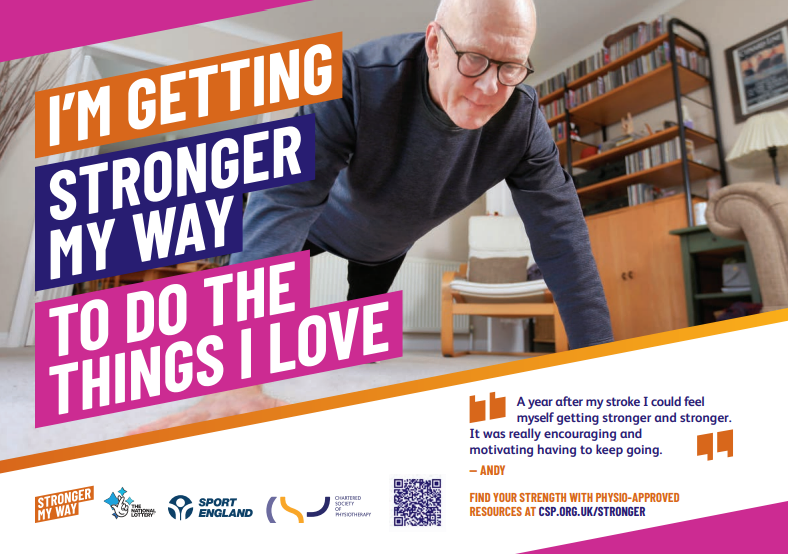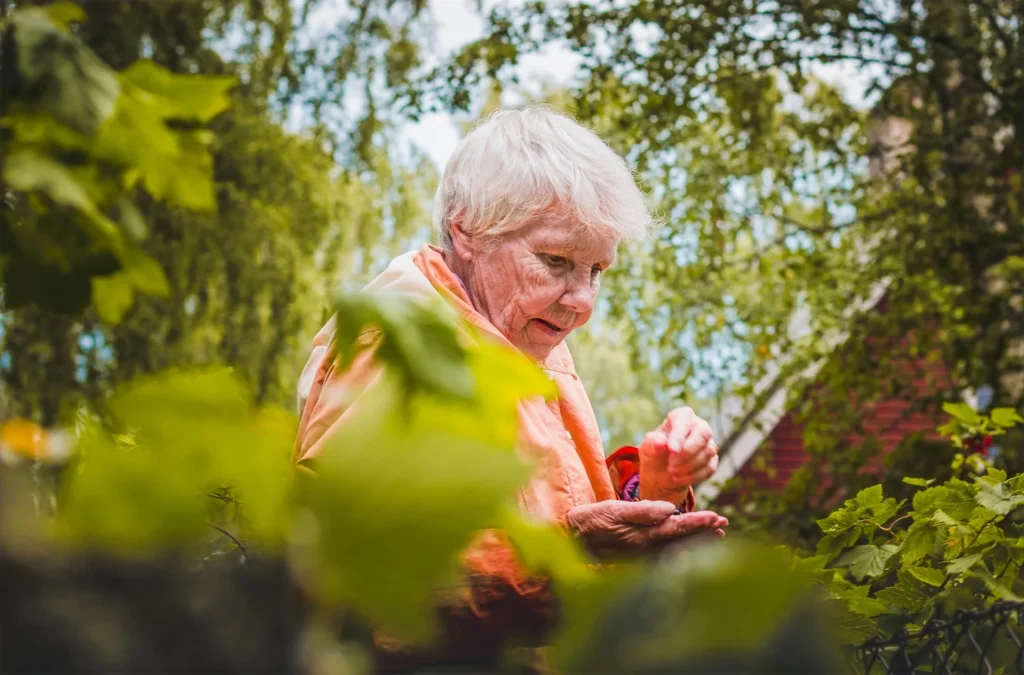In today’s post, I’m going to show you 10 tips to prevent falls.
In fact: these are the same strategies that I use when I see my Physiotherapy clients when I visit them in their homes.
Let’s dive in
- Identify the level of risk
- Look at their walking pattern
- Use appropriate walking aids
- Wear sensible shoes
- Wearing glasses and hearing aids
- Light up walking spaces
- Remove hazards in the home
- Strength and Balance Training
- Manage your health conditions
- Medication review
1. Identify the level of risk
Identifying the level of risk of someone falling is dependent on some KEY factors.
Firstly, recent falls. This seems obvious but the biggest indicator of falls risk is the amount of falls someone has. One or more of the past 12 months suggests a bigger risk and this increases if the amount of falls increase
Secondly, medications. Older adults take many medications but specific medications can increase the risk of falls. Medications such:
- Furosemide, Bumetanide, Spironolactone (Heart failure)
- Levadopa/Co-careldopa (Parkinson’s Disease)
- Zopiclone (Insomnia)
- Blood pressure medications (Ramipril, Lisinopril, Felodipine, Candsartan, Amlodopine, Perindopril, Bendroflumethiazide)
- Sedatives (Quetiapine, Haloperidol)
This is not an exhaustive list but list of medications that increase the risk of a person falling. Examples of the effects of these medications can have are increased urinary frequency when taking Furosemide and the sedating effect of both Zopiclone for people with sleeping difficulties or Quetiapine for reducing agitation.
Thirdly, dizzyness. If a person is becoming dizzy when they are getting up from a bed or chair they should contact their GP for a review of there blood pressure. A change in posture (i.e. moving from a lying to standing position) can cause a temporary drop in blood pressure causing dizzyness. Episodes can be brief, however, it is important to have this reviewed by a healthcare professional.
Lastly, cognition. Older adults living with dementia or have undiagnosed cognitive impairment are at an increased falls risk due to the following reasons:
- are more likely to experience problems with mobility, balance and muscle weakness
- can have difficulties with their memory and finding their way around
- can have difficulties processing what they see and reacting to situations
- may take medicines that make them drowsy, dizzy or lower their blood pressure
- are at greater risk of feeling depressed
- may find it difficult to communicate their worries, needs or feelings
- may not have the understanding or recall that they need a frame or assistance to walk
Having an understanding of the factors that can increase a person’s risk of falling can help provide ways to manage or reduce the risk.
2. Look at the walking pattern
Walking patterns come in all shapes and sizes, some, however, are patterns that suggest that someone is at a high risk of falls. This isn’t a definitive list.
Foot drop
Foot drop can occur for many different reasons. As seen in the video above, if a person cannot lift the front of the foot up when walking then they’ll find they catch their toe on thresholds or rugs which can cause a trip and fall.
An orthotic prescribed by a Physiotherapist or orthotist can bring the foot into a neutral position and reduce the risk of tripping.
Weak Hip Muscles
Weak muscles around the hip which are most common after a hip operation, we can see this on the left hip in the video, the hip drops when she weight-bears on the left side. This occurs as the muscle has been incised by the surgeon to replace the hip bone. After the operation the incised muscle is weak causing instability at the hip and knee, increasing the risk of falling.
Post operative rehabilitation is key to recovery and building the strength in the hip muscles.
Shuffling
A shuffled gait as seen in the video is commonly seen in people living with Parkinson’s Disease. The shuffling becomes more pronounced when turning or when starting or stopping movement, at these points the risk of falling increases. A walking aid can improve the fluidity of movement for some people or a technique called cueing.
Please note, a shuffled gait does not mean someone has Parkinson’s Disease this is an example. Please consult with you doctor if you have concerns.
Difficulty Weight-bearing
This video shows someone who has pain somewhere in there leg which is making it difficult to put weight onto it to take a step. This can be due to an injury or arthritis or many other reasons. The pain stops the muscle around the affected area from working and therefore causing instability around the area which increases a person’s falls risk. Depending on what the root cause will inform how to treat it.
There are many other walking patterns that can increase falls, if you have concerns please contact a physiotherapist for advice.
3. Use appropriate walking aids
Walking aids for some people can be a difficult thing to accept, some people don’t like the idea of using one even though they are more likely to fall without one.
A walking aid that is suitable for a person can really increase the quality of life and reduce the risk of falls.
The key is to ensure it’s the right height and suitable for the person dependent on their need.
4. Wear sensible shoes
I have seen all sorts of shoes that people wear in their home, from bare foot to flip-flops. What people wear can be down to different problems such as swelling for example.
The most common issue is having backless shoes which offer no support and require the person to change how they walk slightly. The backless shoe provides little support around the heel and ankle which can impact on the quality of the walking pattern. High heeled, floppy slippers and shoes with sticky or overly gripping soles can cause slips and trips.
For me, addressing footwear is a quick and simple win when looking to prevent someone from falling.
5. Wearing glasses and hearing tests
Certain eye conditions can really effect someone’s walking. Macular degeneration or glaucoma can significantly impact on the visual feedback which tells our brain where our body is and can plan the movement needed.
For people wearing glasses prescribed by an optician it may be worth considering the type you choose.
Vari-focal or bifocal lenses change the distance of an object seen, however when someone, if walking outside are using vari-focals the change in distances can lead to a fall as they misjudge where they are placing their foot.
Researchers from Sydney studied more than 600 people aged either over 80 or over 65 with a history of falls. All of them used vari-focals and wore them outside at least three times a week.
Half were given single lens glasses for going out, the other half were not. For those who regularly went outside, there were 40% fewer incidents with the single lens wearers.
I’d recommend switching from vari-focal lenses to single lenses.
Also, make sure hearing aids are being worn and hearing tests are done frequently.
6. Light up walking spaces
At night time, if someone is needing the toilet often the act of getting up and dashing over to get there in time, in the dark can be quite risky. Here are some ideas to reduce the chances of tripping or falling:
- A bedside lamp, or plug-in nightlights to light bedrooms, bathrooms and hallways
- Choosing a lamp that is easy to turn on and off, especially if you have difficulty with finger dexterity
- Choosing a lamp with a motion sensor, a adult with dementia may not remember to put a light on before going to the toilet. These types of light will turn on when motion is sensed nearby
- Keep the paths to and from the bathroom clear or objects
- Consider glow in the dark or illuminated switches so they can be easily found a night.
7. Remove hazards in the home
Another quick and simple thing you can do to prevent falls is to look around the home and remove anything that seems obvious that can cause a fall.
- Wires, cables
- Loose rugs and mats
- Piles of magazines, newspapers or clothes
- Moving items used in the bathroom off the floor onto a table (e.g. soap in the shower)
8. Strength and Balance Training
Regular movement is one of the key areas that can prevent falls. It may seem counter-intuitive for someone that falls to then ask them to move more. The alternative is that then we become fearful of falling, the consequence of this is that we move less, our muscles become weaker, joints stiffer and our quality of life worsens.
Below are some of the reasons older adults don’t participate in exercise:
- Fear that their condition inhibits them or they could deteriorate as a result of doing activities
- Low mood and a fear of embarrassment
- Their symptoms and energy levels vary day to day
But, here are some ways that can motivate older adults to exercise:
- Set a specific, memorable goal which is short-term and related to ‘doing more’ (e.g. ability to complete daily activities) and ‘feeling better’ (e.g. managing the condition, improved mood or self-esteem).
- These tend to be more motivating than longer-term medical benefits.
The Chartered Society of Physiotherapy campaign ‘Stronger My Way’ delivers physio-approved, reliable advice to help you maintain and improve your strength – and let you do the things that matter the most. Click on the Stronger My Way picture below and it will take you to the website where you can access this great resource. Additionally, if you feel we can help, please get in touch.

9. Manage your health conditions
Managing any health conditions are important to ensuring you can prevent falls. The MOT’s, blood pressure reviews, blood tests, diabetic appointments etc are all key to ensuring that the areas that can contribute to falls e.g. low blood pressure are spotted early and managed well to keep you in the best health possible.
10. Medication review
In our world today older adults have multiple health conditions, some of these conditions require medications to ensure they are managed effectively.
An issue can become when the number of medications starts to grow and the risk of medications interacting with each increases. GP practices today have pharmacists as part of there multi-disciplinary team and can provide medication review.
Medication reviews can be vital in preventing falls and identifying some medications that could be reduced or stopped. Also, they can discuss why you need the medications and their importance to you taking them.
Need Help?
At Stride, we offer a Falls Prevention Program designed to help clients in Solihull and the surrounding region improve balance, build strength, and regain confidence.
Click here to learn more about our Falls Prevention Program.

